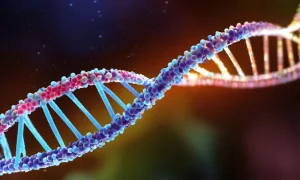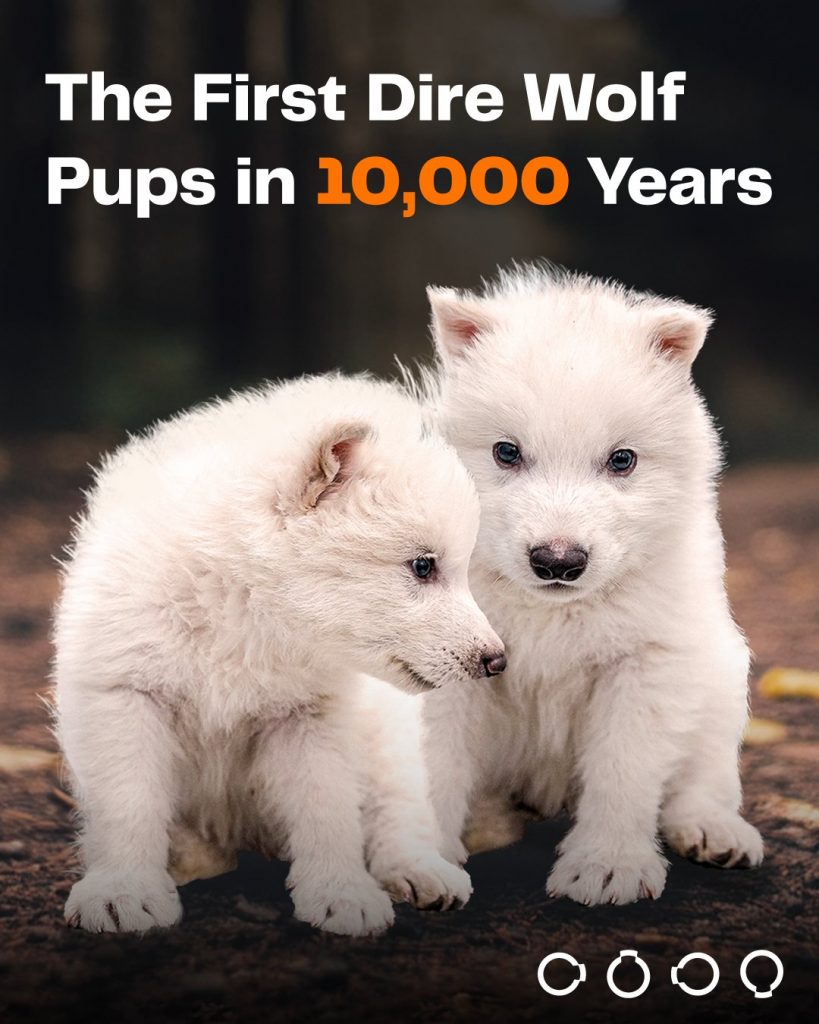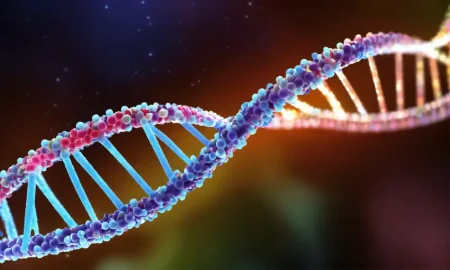While some hail it as a marvel of genetic engineering, others cry foul, questioning the very validity of the science behind the de-extinction of the Dire Wolf. This has profound implications for life itself, writes Satyen K. Bordoloi.
A new phrase must be coined for this unique moment: “de-extinction level event”, mirroring the opposite that is a staple of both cinema and science. Last year, the world heard sounds not heard on the planet for over 12,000 years: the call of a Dire Wolf, a species that went extinct before ‘civilisation’ was even a concept humans knew. This was announced by Colossal Biosciences, a company known for its ambitious de-extinction projects. In early April, they announced that last year, three Dire Wolf pups – Romulus, Remus, and Khaleesi- were born in one of their facilities, an event they deemed monumental for bringing back a species lost during the last Ice Age.
The news, accompanied by images of a snow-white wolf on the Time Magazine cover and photos and videos of tiny, palm-sized pups on the company’s social media handles, caused both ripples of excitement and a touch of disbelief worldwide.
What Are Dire Wolves: Dire wolves are formidable predators that have been immortalised in popular culture, whether in the Game of Thrones series or various vampire sagas in Hollywood that mimic the size and ferocity of these giant wolves. Native to North America, they were characterised by broad heads, large teeth, and powerful frames that made them apex hunters. However, they went extinct about 12,500 years ago, possibly prey to environmental changes and the increasing presence of humans in the region then.
The De-Extinction Process: Colossal Biosciences claimed success through “deft genetic engineering and ancient DNA.” They assert that they meticulously reconstructed the wolf’s genome using DNA extracted from a 12,000-year-old tooth found in Ohio, along with a 73,000-year-old inner ear bone from Idaho. CRISPR gene editing technology was then employed to modify the genome of the gray wolf, the dire wolf’s closest surviving relative, by altering 14 genes at 20 specific points. These targeted edits aimed to give the gray wolf the defining characteristics of its extinct cousin, such as increased muscle mass, a larger skull, and thicker fur.
The first two pups, Romulus and Remus, howled for the first time on October 1, 2024, shortly followed by Khaleesi. The company stated that these pups are now residing in what they call Zone Alpha, a sprawling 2,000-acre ecological preserve within a secret, high-security facility in the northern U.S.
Great Science or Awesome PR: Colossal claimed that this was more than just a biological revival; they aimed to rewrite humanity’s history with extinction. They emphasised that they carefully integrated the old DNA to avoid unhealthy traits in the animals strategically; for example, they cut out the genes associated with the risk of blindness or deafness.
Not everyone was impressed. The BBC quoted zoologist Philip Seddon as referring to the pups as “genetically modified gray wolves.” Others have also questioned whether such ancient DNA – fragmented and degraded over millennia – could ever be sufficient for creating a complete clone. The result, the detractors claim, is a gray wolf that possesses some characteristics of its dire wolf cousins.
Colossal Biosciences has defended its collaboration with Dr. Beth Shapiro – a biologist at the company – asserting that their achievement does signify de-extinction by recreating animals with characteristics akin to the extinct species. She emphasised the close genetic relationship between gray wolves and dire wolves, making the gray wolf the most sensible candidate for this genetic reconstruction.
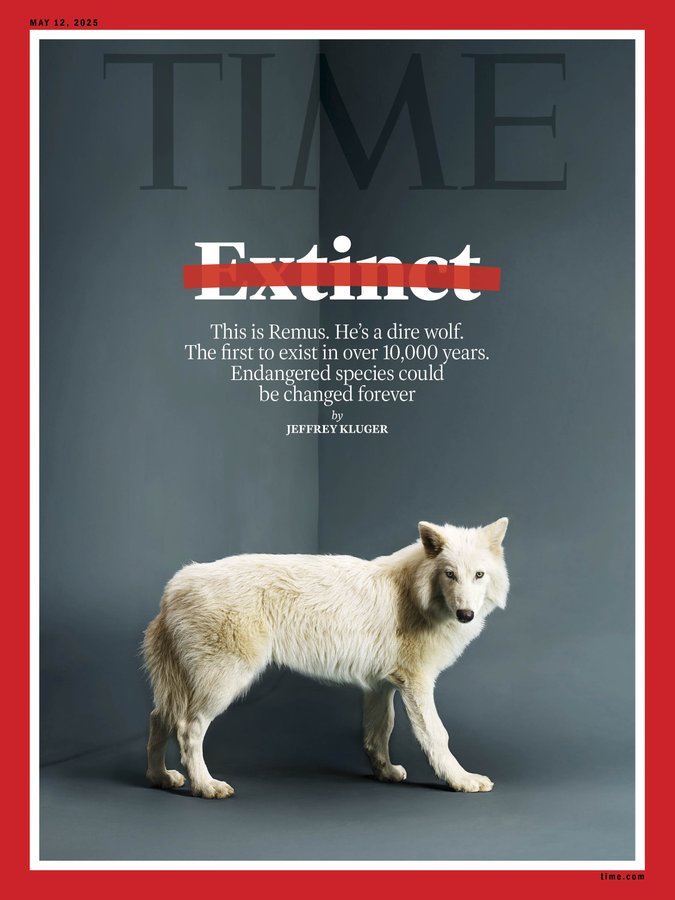
What Is De-Extinction: Jurassic Park was a work of fiction infused with strands of DNA from science. The book and the films it inspired discuss true de-extinction, where entire dinosaurs are recreated from their DNA. In real life, however, as demonstrated here, there is a significant debate about what exactly constitutes de-extinction. Is it the creation of a genetically identical organism, as seen in Jurassic Park, or is it reviving an animal with the key phenotypic characteristics of an extinct species, as in this case? This distinction, along with the surrounding debate, is proving to be a powerful catalyst for scientific advancements in the field.
While both legacy and influencer media become clickbait broadcasters of spicy press releases, science operates on a healthy dose of scepticism. It ensures that the more extraordinary the claim, the more rigorous its scrutiny. This eventually leads to a better understanding of the complex processes involved in subjects such as genetics, evolution, and extinction.
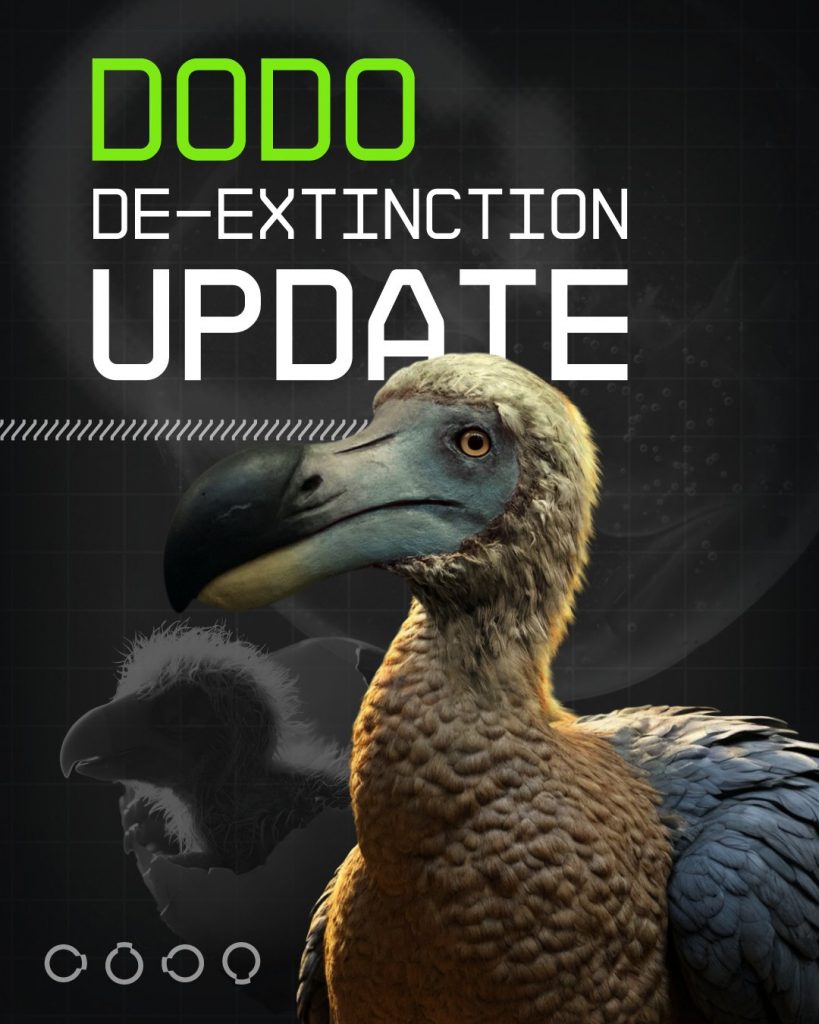
Past De-Extinction Efforts: The same company has also participated in previous de-extinction projects. You may have heard of the efforts to resurrect the woolly mammoth, the Tasmanian tiger, and the dodo bird. Colossal Biosciences was involved in each of these initiatives. They were also behind the amusing story of the creation of the ‘woolly mice’ with hair and fat resembling that of this extinct cousin of the elephant. The company believes that in the next three years, they will have birthed the first mammoth calves using Asian elephants as surrogates.
The company’s efforts have raised several issues, including concerns about the long-term health and viability of de-extinct populations, the possibility of unintended ecological consequences, and—most crucial of all—the ethical implications of tampering with nature in this way.
Wrong Signal for Conservation: Colossal Biosciences has been touting its capabilities as a way to combat climate change, help protect endangered species, and generally be good for the world. As a science and tech optimist, I am not one to judge their intentions. However, I must point out that in the past, good tech intentions have indeed paved the road to the proverbial hell. What can be freely judged is the message that ‘de-extinction’ projects convey to the world.
We have not yet begun to scratch the surface of all the species that exist in the world, and we are already causing mass extinctions of hundreds of thousands of species every year. Hence, calling these kinds of efforts ‘de-extinction’ sends the wrong signal that it is indeed possible to bring back extinct species. This isn’t entirely true. Not just because the world is not one big Jurassic Park of extinct species, or that once extinct, a species can’t truly be brought back, but also because nature ‘moves on’ after a species extinction, and reintroduction could harm its new, delicate equilibrium.
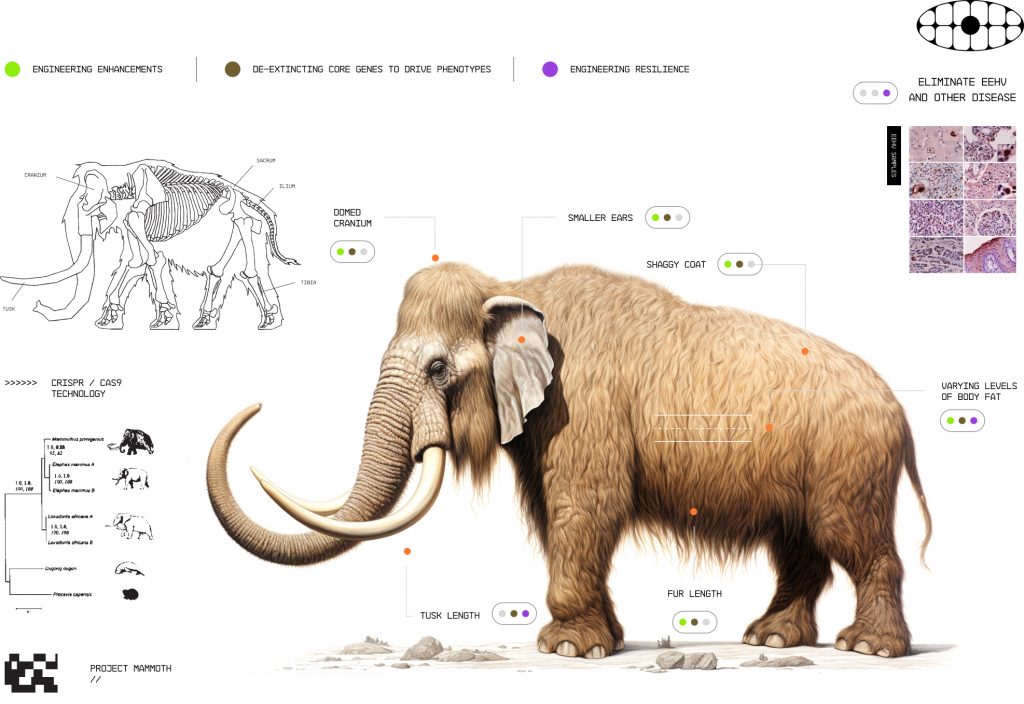
The Future of De-Extinction: Despite numerous concerns, de-extinction is not going away. In fact, it will only gain momentum thanks to emerging technologies in DNA editing and artificial intelligence. AI is driving genomic mapping and data analysis, speeding up the process of not only sequencing DNA but also optimising the reconstruction of extinct animal genomes by identifying patterns in damaged DNA, thereby filling gaps and even predicting genetic issues based on historical data. AI is also being used to conduct sophisticated simulations to predict how these reintroduced extinct species might interact with current ecosystems. AI can assist in identifying suitable genetic material from closely related living species and verify gene editing success by quickly analysing and testing modified cells for the desired traits.
This is, hence, a good time to debate both extinction and ‘de-extinction’. With machine learning untangling the world’s genomic jigsaw, this could be the first of many such breakthroughs. Will this resurrection of the past save the future or open a Pandora’s box of unintended consequences? Only time will tell. What we ought to remember in the meantime is a simple truth: science without a conscience is a poison that could one day lead to our own extinction.
In case you missed:
- AI as Cosmic Cartographer: Teen’s Discovery Illuminates Positive Power of Artificial Intelligence
- 2025 – Year of Gene Therapy: Curing Lymphoma & Wiskott-Aldrich Syndrome, & Using AI
- Why the Alleged, Upcoming AI Crash Is Never Going To Happen
- Would an Electric Plane Have Reduced the Air India Crash Death Toll?
- Alchemists’ Treasure: How to Make Gold in a Particle Accelerator (and Why You Can’t Sell It, Yet)
- AI’s Top-Secret Mission: Solving Humanity’s Biggest Problems While We Argue About Apocalypse
- 95% Companies Failing with AI? An MIT NANDA Report Misread by All
- Face-Off: Denmark’s Copyright Move Against Deepfakes & the Ghost of Anil Kapoor
- Microsoft’s Quantum Chip Majorana 1: Marketing Hype or Leap Forward?
- A Small LLM K2 Think from the UAE Challenges Global Giants


